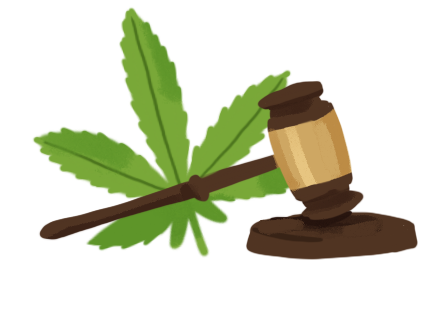The dangerous alternatives to legalization
April 27, 2023
After decades of dragging their feet, the Minnesota Legislature has made serious progress on a recent bill concerning the legalization of recreational cannabis. The bill spearheaded by Minnesota Senator Lindsey Port would make Minnesota the 22nd state to legalize marijuana on a recreational level. After decades of persistence from the Democratic-Farmor-Labor party and dismay from Republican senators, it’s hard to find a legitimate argument against passing the current bill at hand.
This time, Democrats shouldn’t have trouble passing it. Minnesota has Democratic majorities in the House, Senate, and governor’s office. The issue now is revising the bill to guarantee it will pass this session, as promised by Governor Tim Walz. With a narrow majority, Democrats have to choose their next steps carefully.
“The Senate has a slim Democratic majority,” U.S. government teacher Christopher Griggs said. “So the big question is whether there is a Democrat or two who won’t vote for the bill, or a Republican or two that will. I don’t think we know that yet.”
Low-potency edibles and other THC-infused products derived from hemp have been available since their legalization last year. The law was passed after an oversight by Senate Republicans, who failed to read the fine print in a legislative package. Since its passing, businesses selling THC have been doing well for themselves, establishing the basis of a cannabinoid market. However, both Democratic legislators and community members have realized this effort was insufficient.
Rampant legal loopholes and a thriving street market show that current legislation is insufficient to regulate marijuana use in Minnesota. The lack of a stable legislative framework causes unrest in not only the economy but in communities. Rising incarceration rates are rising as arrests for cannabis possession disproportionately affect minorities. Medicinal use has also gone out the window as prices are mostly unaffordable for families in need. After looking at current statistics, Minnesota Democratic lawmakers are realizing that half measures simply won’t cut it.
Republican representatives have raised many fair questions about the negative impacts marijuana can have on populations, especially youth. However, these exact arguments denouncing marijuana use as harmful are overshadowed by the booming cigarette and vaping giants of the United States. Not only is marijuana use proven to be less harmful than its nicotine counterparts, but cannabis legalization would also allow funding for education concerning its use.
The bill would only allow the purchase and use of marijuana for those over 21. The age restrictions are necessary to pass such a law as psychoactive substances can indeed cause issues with development in children and teens. If these age restrictions can be put in place, legalization would reduce the presence of the more harmful designer drugs and synthesized cannabis in the hands of teenagers nationwide.
With legalization comes regulation; synthetic cannabinoids are designed to bypass legislation and have no rules or laws to govern what they actually contain. This poses the most risk for individuals under 25, who are less likely to research the products they are purchasing. Certain synthesized products that are currently legal, such as Delta-8, can have dangerous side effects such as psychosis, hallucinations, and even paralysis. As these consequences of fake cannabinoids outweigh the economic benefits, it seems as if the only way to ensure youth safety is to first provide an alternative and get rid of synthesized marijuana.
“In Minnesota there’s currently very little regulation around what ingredients are actually in edible products, apart from the THC,” Griggs said. “Part of the debate happening now is around tightening restrictions and regulations on what’s already been legalized.”
From an economic standpoint, recreational marijuana is a product to tax. In 2021, the state of Colorado reported over 423 million dollars in tax collection from recreational marijuana sales. While many people in Minnesota illegally purchase weed on the streets, the Minnesota government is sitting on a green-colored gold mine.
The illegal demand for drugs and other substances from those under 21 is increasing and cannot feasibly be stopped. With the vaping epidemic raging across the United States, legislators need to realize the only path forward is prevention and alternatives. The chemicals and metals found in e-cigarettes have similarly been found in fake cannabis oils. Delta-8, created as a response to partial legalization, is endangering the youth in a way marijuana never would. When smoked, legalized cannabis, while not good for the lungs, has been proven to be safer and lacks the same dangerous side effects of Delta-8. Legalization would eliminate the need for dangerous designer drugs and allow safe regulated substances to enter the street.
It’s quite clear that not a single argument against legalization can withstand a basic fact check. Its positive effects vastly outweigh the cons and will greatly benefit Minnesota as soon as the bill is passed. Once this happens, the hope is to have the law go into effect sometime around August of 2023.
This piece was originally published in Zephyrus’ print edition on April 20.




